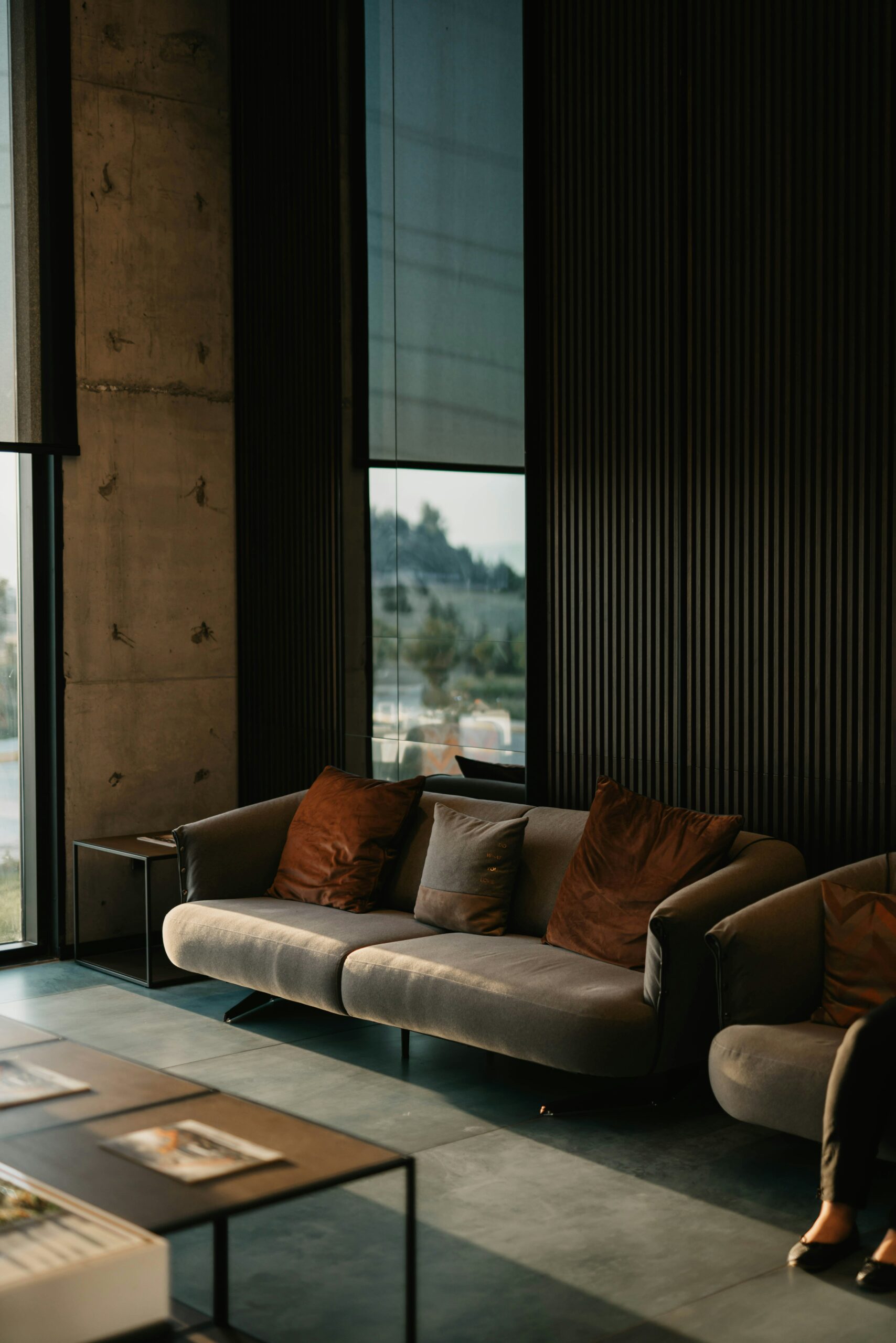Your home reflects your personality and style, and every homeowner wants to create a space that is not only functional but also visually stunning. If you are looking to elevate the design of your home, custom architectural millwork is an excellent option that can add a touch of luxury and sophistication to any room. From intricate crown moldings and baseboards to unique cabinetry and built-ins, the possibilities are endless. Not only does it enhance the aesthetic appeal of your home, but it also adds value to your property. In this article, we will explore the benefits of using custom millwork for your home and how it can transform your living space into a work of art and help it stand out from the rest.
What is Architectural Millwork?
Architectural millwork refers to the custom woodwork and decorative elements that are intricately crafted and installed in buildings. It involves the design, fabrication, and installation of unique and personalized wood products such as moldings, trim, cabinetry, doors, windows, paneling, and other architectural features.
Architectural millwork serves both functional and aesthetic purposes, adding beauty, character, and craftsmanship to interior and exterior spaces. It enhances the architectural style of a building, create focal points, provide storage solutions, and add a sense of luxury and refinement. Whether it’s ornate moldings in a historic building or sleek modern cabinetry in a contemporary space, architectural millwork showcases the artistry and skill of the craftspeople, creating visually stunning and functional elements that enhance the overall design of a structure.
Benefits of Using Architectural Millwork in Your Home Design
There are several benefits to using architectural millwork in your home design. One of the most significant advantages is that it adds value to your home. Homeowners consider custom millwork a luxury feature and it can significantly increase the resale value of your property. It is also an excellent way to make your home stand out from the rest and create a unique and personalized space.
Another benefit of using architectural millwork is that it can enhance the functionality of your home. Custom cabinetry and built-ins supply additional storage space and organization, while custom doors and windows can improve energy efficiency and soundproofing.
Architectural millwork is also a sustainable and eco-friendly option. Most custom millwork is made from high-quality, sustainable wood sourced from responsibly managed forests. This means that not only are you getting a beautiful product, but you are also making a positive impact on the environment.
Choosing the Right Design for Your Home
Choosing the right architectural millwork for your home can be a daunting task, but with the help of a skilled craftsman, it can be an enjoyable and rewarding experience. When choosing your millwork, it is essential to consider your personal taste and style, as well as the practical aspects of the design.
Working with a professional millwork company can help ensure that you get the right product for your home. They can provide you with design ideas and help you choose the right materials and finishes to fit your specific needs and style.
Customizing Your Design
One of the great advantages of architectural millwork is that you can customize the design to fit your specific needs. With it any different functions and designs, custom millwork can fit into any space and enhance the existing décor of your home.
Types of Architectural Millwork
Architectural millwork comes in many different styles and designs which makes it easy to find something that fits your personal taste and style. Some of the most popular types of architectural millwork include:
- Moldings and Trim: Moldings and trim are decorative elements enhance the appearance of walls, ceilings, windows, and doors. They can include baseboards, crown moldings, chair rails, wainscoting, and cornices.
- Cabinetry and Built-ins: Architectural millwork includes custom cabinetry and built-in furniture pieces like bookcases, entertainment centers, and storage units. These elements are designed to fit specific spaces which provides excellent customization.
- Doors and Windows: Millwork is often used to create intricate doors and windows that match the architectural style of a building. This can include panel doors, French doors, casement windows, sash windows, and window frames.
- Staircases and Railings: Architectural millwork can be used to create custom staircases, balustrades, and railings. They add both functionality and aesthetic appeal to a building’s interior.
- Paneling and Wall Treatments: Millwork paneling can be used to cover walls and create visual interest. Examples include raised paneling, beadboard, shiplap, and wall panels with intricate designs.
- Fireplace Mantels: Architectural millwork often includes custom fireplace mantels that serve as focal points in living spaces. Mantels can be designed in a range of styles and materials to complement the overall design scheme.
- Countertops and Surfaces: Architectural millwork can extend to countertops and other surfaces in kitchens, bathrooms, and other areas. Custom wood countertops, bar tops, and desktops are examples of millwork surfaces that add warmth and character to a space.
- Decorative Ceilings: Intricate millwork can be used to create decorative ceilings, such as coffered ceilings, beam ceilings, or ornamental ceiling medallions. These elements add architectural interest and elegance to a room.
Popular Materials Used
Some of the most popular materials used in architectural millwork are:
- Wood: Wood is the most traditional and commonly used material in architectural millwork. Different types of wood, such as oak, maple, mahogany, cherry, and walnut, are used to create various millwork elements. Wood provides a timeless and classic look, and its natural grain and warmth add character to the space.
- MDF (Medium Density Fiberboard): MDF is an engineered wood product made from wood fibers and resin, compressed under high pressure. It is known for its smooth and uniform surface, which makes it an ideal material for millwork. MDF can be easily shaped, routed, and painted, allowing for intricate designs and finishes.
- Plywood: Plywood is made by bonding layers of thin wood veneers together with adhesives. It is strong, durable, and resistant to warping or shrinking, making it suitable for millwork applications. Plywood comes in different grades and can be finished with veneers or laminates to achieve various aesthetic effects.
- High-Density Polyurethane (HDPU): HDPU is a synthetic material used as a substitute for wood in millwork. It is lightweight, easy to install, and resistant to moisture, insects, and decay. HDPU can be molded and shaped into various profiles and designs, mimicking the appearance of wood without the associated maintenance requirements.
- Metal: Metal elements, such as stainless steel, brass, or aluminum, are often incorporated into architectural millwork for added strength, visual interest, or to create a contemporary aesthetic. Metal can be used as accents, edging, hardware, or inlays within wood or other materials to create a contrasting effect.
- Glass: Glass is used in architectural millwork to create decorative panels, partitions, shelving, or display cases. It provides transparency, light transmission, and can be frosted, etched, or stained for added visual appeal. Glass elements can be combined with wood or metal to create unique and modern millwork designs.
The Process of Installing Architectural Millwork
The process of installing architectural millwork can vary depending on the specific product and design. However, most installations follow a similar process.
First, the craftsman will take precise measurements of the space to ensure that the millwork fits correctly. They will then create a detailed design plan and provide you with a quote for the project.
Once the design is approved, the craftsman begin the fabrication process. This can take several weeks, depending on the complexity of the design and the materials used.
Finally, the craftsman install the millwork and ensure it fits perfectly and is securely attached to the walls or ceiling.
Maintaining Your Custom Millwork
Architectural millwork is a durable and long-lasting product that can provide years of beauty and functionality to your home. However, like any other product, it requires proper maintenance to ensure that it stays in good condition.
Regular cleaning and dusting can help keep your millwork looking its best. Avoid using harsh chemicals or abrasive cleaners, as these can damage the wood and finishes.
It is also essential to keep your millwork dry and well-ventilated to prevent warping or cracking. If you notice any signs of damage, such as cracks or splits in the wood, it is essential to address them as soon as possible to prevent further damage.
Conclusion
Custom architectural millwork is an excellent way to add beauty, character, and value to your home. It can transform a plain, ordinary room into a space that is visually stunning and inviting. Whether you are looking for custom cabinetry, built-ins, or decorative trim, there is an architectural millwork product that will fit your specific needs and style.
The professionals at Aaron and Co Millwork can ensure that you get a high-quality product that fits your specific needs and style. So why not elevate the design of your home with custom architectural millwork today?





